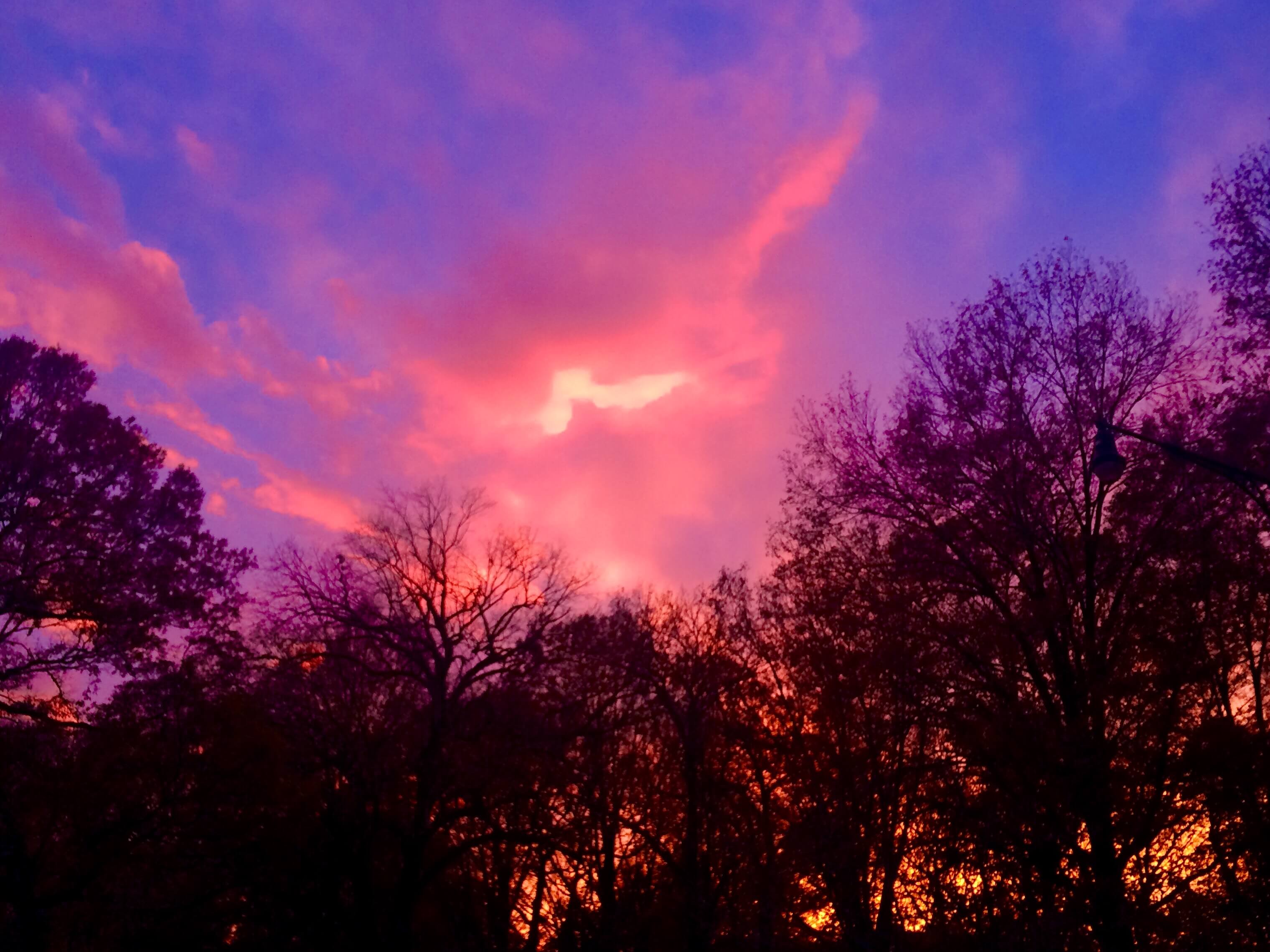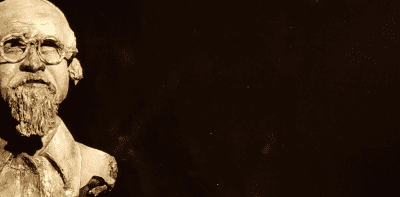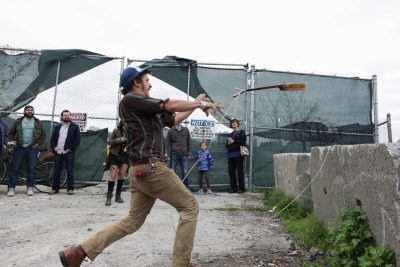2015: The Year of Being Afraid


The fire outside
It is December and I am in New York and I don’t have to wear a coat and people tell me that this is because it’s the end times. Roses are blooming on Christmas, they say. What else could it be but a sign of certain doom. Ok, but also: Who knew the apocalypse would feel so much like an early summer day?
Twelve months in, it’s hard to remember exactly how this year began, but it’s easy to see how quickly it developed its theme; 2015 is a year centered around one thing: fear. This isn’t exactly new, of course; it would be hard to argue that the discourse of terror and a corresponding culture of anxiety hasn’t been pervasive in American society since at least late 2001 in its most modern iteration, and since the late 17th century in myriad other status quo-preserving ways, including both figurative and literal witch hunts.
And yet, the difference this year is that it seems like fear has finally become such a firmly entrenched part of our cultural conversation, its existence such an established part of our collective experience, that we’ve reached a point of no return; our lives are now saturated with mandates to be afraid—of everything. These mandates come from all points along the spectrum: There’s arch-conservatives warning of the dangers inherent in everything from the entrance of immigrants into America to the concept that women ought to have control over their own bodies to the mere existence of people of color; and then there’s the competing declarations asserting that it’s only these fear-mongering conservatives that should really be feared—and that every xenophobic, anti-science, racist remark is a sign that all of America is doomed, that nothing will ever get better. It’s enough to exhaust and infuriate all but the most partisan of listeners, these broad attacks which lack any nuance, and serve only to inflame already heated debates.
But this the point of fear. Those who wield terror as a tool target it toward specific audiences; what plays well at a Trump rally in Alabama isn’t going to inspire much more than disdain—a sentiment that’s far more the polar opposite of fear than hope, even; we can’t be afraid of that for which we hold contempt—in many of those reading about these rallies from their homes in Brooklyn. And yet, despite this intrinsic divisiveness, fear is one of the few things that brings people together, all the while vampirically feeding off both fragmentation and our society’s penchant for individualism, that fundamental America ethos which goes hand-in-hand with isolation. Fear is paradoxical that way. Consider that the implicit addendum to any command to be afraid is the request to take care of yourself, and to put your personal needs over everything and everyone else. It’s no coincidence, after all, that as the currency of fear has increased in value, so has an interest in performing self-care—and, make no mistake about it, self-care is often performative. It’s yet another way of resisting change, of avoiding risk, of hiding from everything in order to focus on yourself, and only yourself. (And then sometimes self-care is just about benefitting from a good face mask. But still.)
Fear, then, is being used as never before to make us feel together in our aloneness. We can, as one, worry about the idea that our subway ride might be disrupted by a sudden explosion. We can, as one, look for escape routes in every movie theater, concert venue, and office building we enter. We can, as one, be skeptical of every person who doesn’t look like us, who doesn’t sound like us, who doesn’t share our points of view. We can, as one, take care of ourselves in order to preserve our way of life. We can, as one, exclaim over everything incomprehensible in this world of ours—from weather aberrations to gross miscarriages of justice—as if they are all the same, all just another sign that the world is a terrible and irredeemable place, home to nothing now but our doom, and that it is incapable of being fixed. Fear leads us to believe that every perceived slight is an actual problem. Fear leads us to lose our ability to perceive what is a real injustice and what is merely an annoyance. We are now so attuned to the culture of being afraid that every hint of something slightly off is a signal that disaster is imminent.
And then there is that pesky “we.” Fear-mongers don’t differentiate; they want to unite us in our terror, gloss over our varied experiences so that they can diminish our differences. “We” is the favorite pronoun of fear, even though its inclusiveness is limited to those who feel—who fear—the same things. You’re either with us, or against us—this is the slogan for the fear-monger. When someone asks “us” to be afraid, when someone says “we” need to protect ourselves, where exactly are those lines being drawn? Who gets to be an “us”? Who, it’s worth wondering, would even want to? When the only voices clearly heard in our society are the loudest and most reductive ones, used with the goal of ensuring that nothing changes unless it does so according to their specific vision, and when people who voice legitimate complaints are dismissed as victimhood-embracing outliers, what is there to do, really but feel hopeless?
But so, how then, in the presence of such all-encompassing societal hopelessness can anyone be expected to face all this fear? One answer would be to turn away; keep the door closed and the fear at bay and resist by making your world smaller; hear something terrible and simply say “fuck 2015” and be done with it. This, though, is just another form of the worst type of self-care, the kind which advocates a solipsism that only facilitates the perpetuation of the existing status quo. It works to an extent, but only for those whose fears are mostly illusions, those same people who worry endlessly about whatever it is Donald Trump is raging about this week, the ones who feel like every voiced dissent against their own ideals is a personal attack. For these people, fear is a comfort both in its presence and its absence; terror is just another way of making larger sense of individual insecurities.
As for the rest of us (and yes, I use “us” lightly), what we risk in ignoring this latest narrative of fear is the reality that—at the same time imaginary demons are relentlessly invoked by public figures, and literal walls are being proposed as a form of sequestering those who are different due to mere accident of birth—there are millions of Americans who have actual things to fear, things like death at the hands of ostensible protectors (although if anyone thinks the police are primarily interested in protecting anyone other than themselves anymore, I’d be interested to meet them), things like the inability to provide a home or food for their children, things like experiencing assault and having their cries for help fall only on willfully deaf ears.
What we risk in ignoring this latest narrative of fear is that the actual problems which exist—problems which should not only be a source of fear, but also of anger and outcry—will then continue apace, and the public will continue to be told over and over that there are bigger problems out there, just out of sight, and that those are the things that signify doom. Those are the things, we’re told, that threaten our way of life. But when “our way of life” necessarily excludes so many of the people who are living in it, then maybe it needs to be, if not knocked down completely, then at least rebuilt. This takes work.
The reason that fear is such an effective tool of power is that everyone who has ever fallen under its thrall knows how easy it is to feel helpless to its allure. The best part about fear is that it’s so easy. It requires almost nothing from its hosts. Fear, in that way, is the perfect emotion for 2015, when, more than ever before, we have become used to things getting easier and easier. The simple relief of knowing that if you’re hungry or if you need a car or if you want to be entertained the solution to your problem is just a click away is reflected in the facility with which people have come to adopt their fears and how they’ve chosen to dole out blame and hate. Didn’t get into the college of your dreams? There’s a whole race of people to blame for that. A woman rejected you after one Tinder date? There’s a whole gender to blame for that. Want to convince a bunch of underemployed, undereducated Americans that none of their problems aren’t actually the fault of this country’s gross social and class system which perpetuates inequality and injustice? There’s whole religions and nationalities to blame for that. See? It’s so easy.
The ease with which so many people embrace fear is as understandable as it is terrifying, as if it is some natural way of being, as if nature cares if we hate or love, if we cling to fear or seek empathy. And yet there is cause for hope. Though 2015 might be the year of being afraid, it was also a year in which truly terrifying things were not allowed to occur without being noticed. Fear is not something that usually holds up to a close look; it is almost always insubstantial. And so it has been and will continue to be addressed. That is the lesson of 2015, in the end: The fear-driven members of our society, those who reside at the foundation and in the pinnacle of our existing power structures, need to be held accountable for the environment their fear has created, a world in which 12-year-old boys can be blamed for their own deaths and bigots can spew hate to adoring crowds. 2015 might have been the year of being afraid, but there’s reason to believe that 2016 will be the year of answerability, for the fear-mongers among us and for any one who blindly upholds the status quo. There is work already being done to reach a place where injustices do not go by without comment and where hate and fear are met with resistance and a call for action. If this is the end of the world as we know it, maybe that’s just fine.
Follow Kristin Iversen on twitter @kmiversen
You might also like 




















